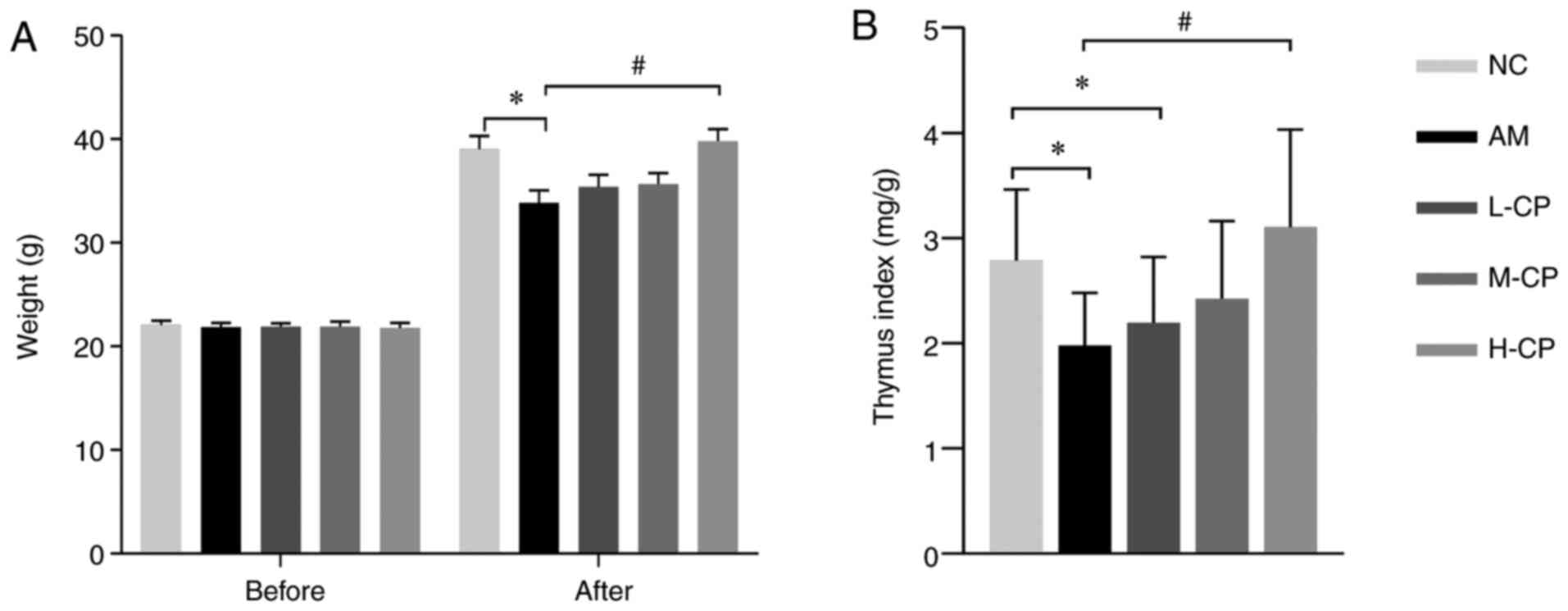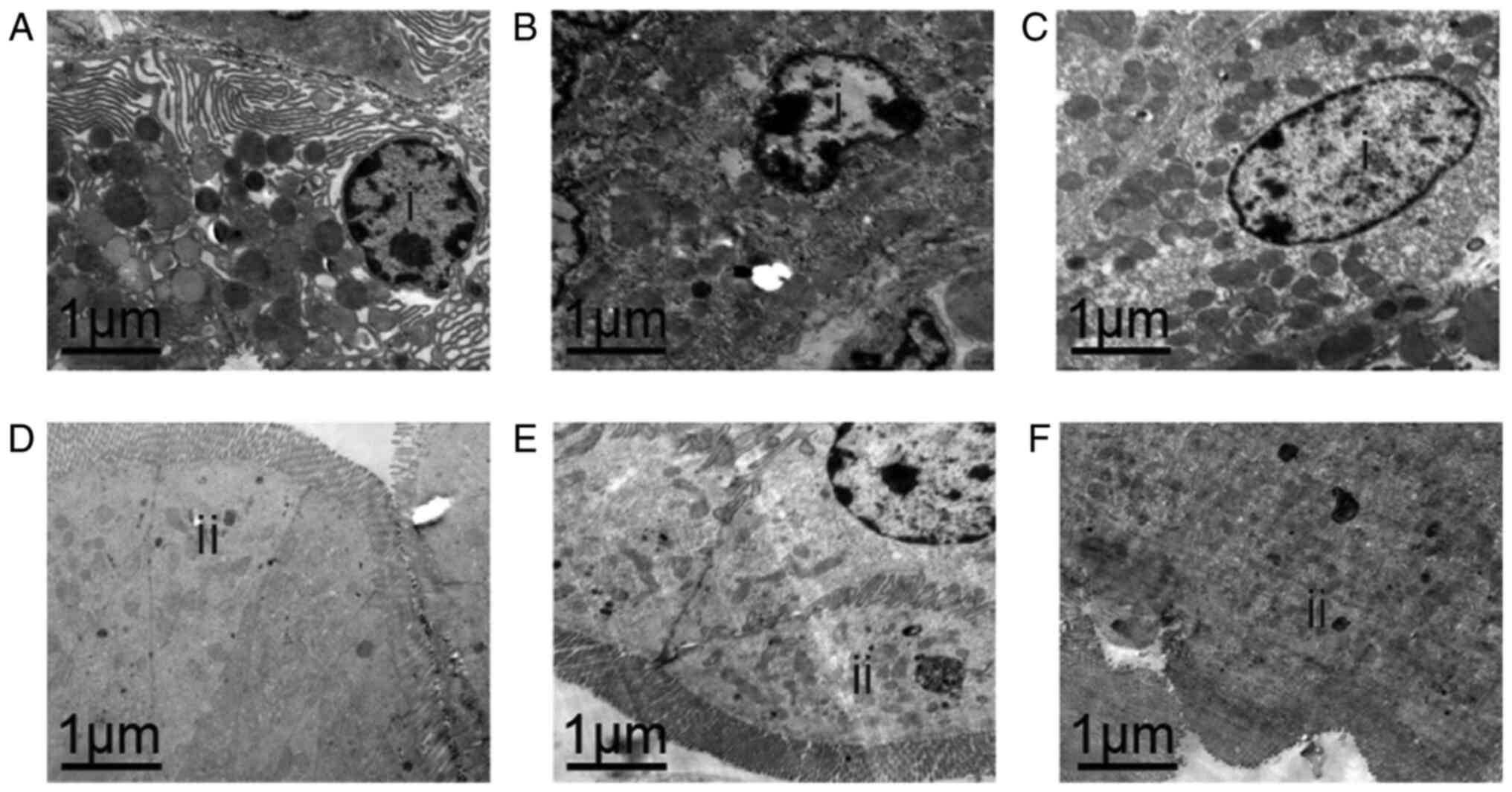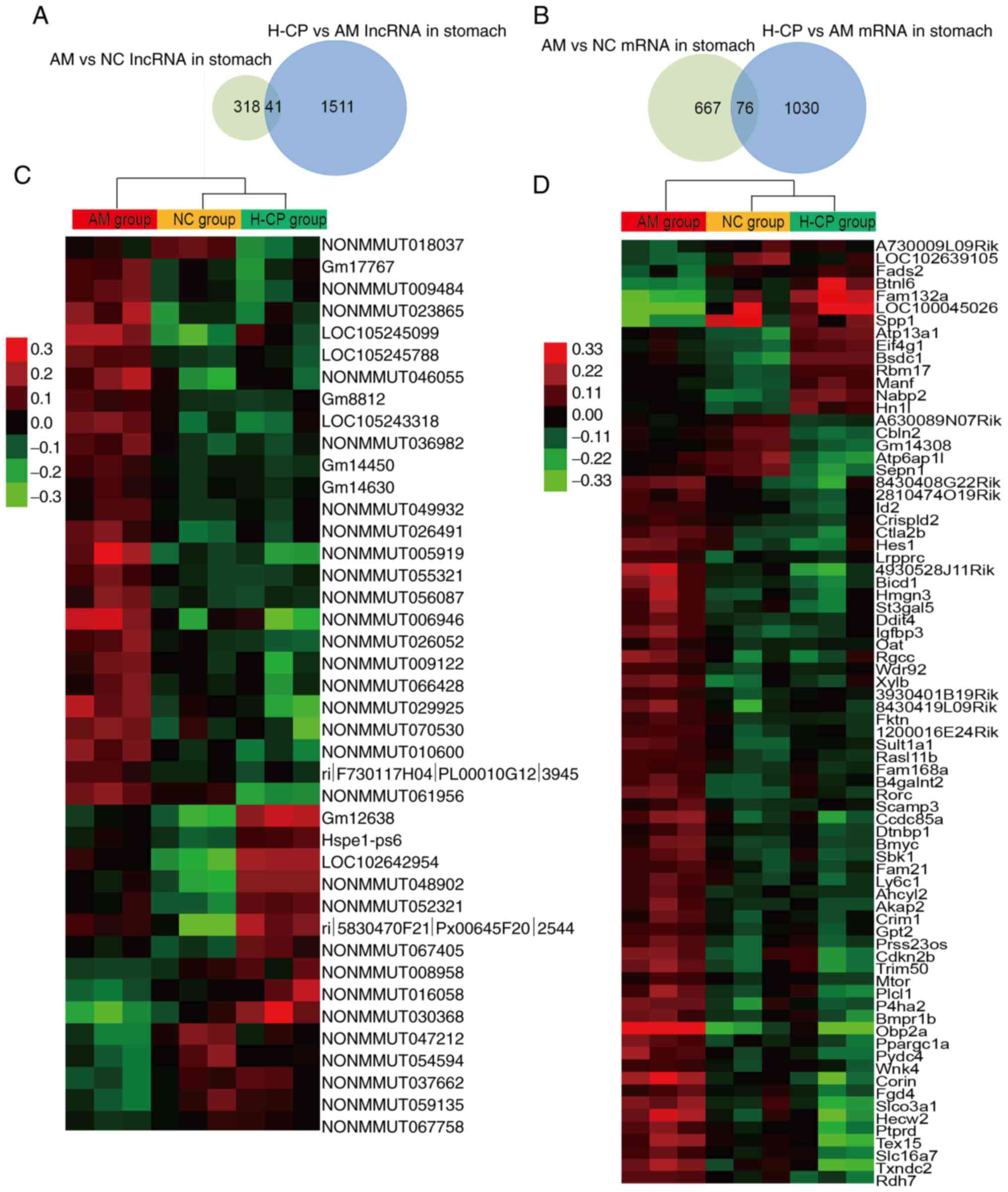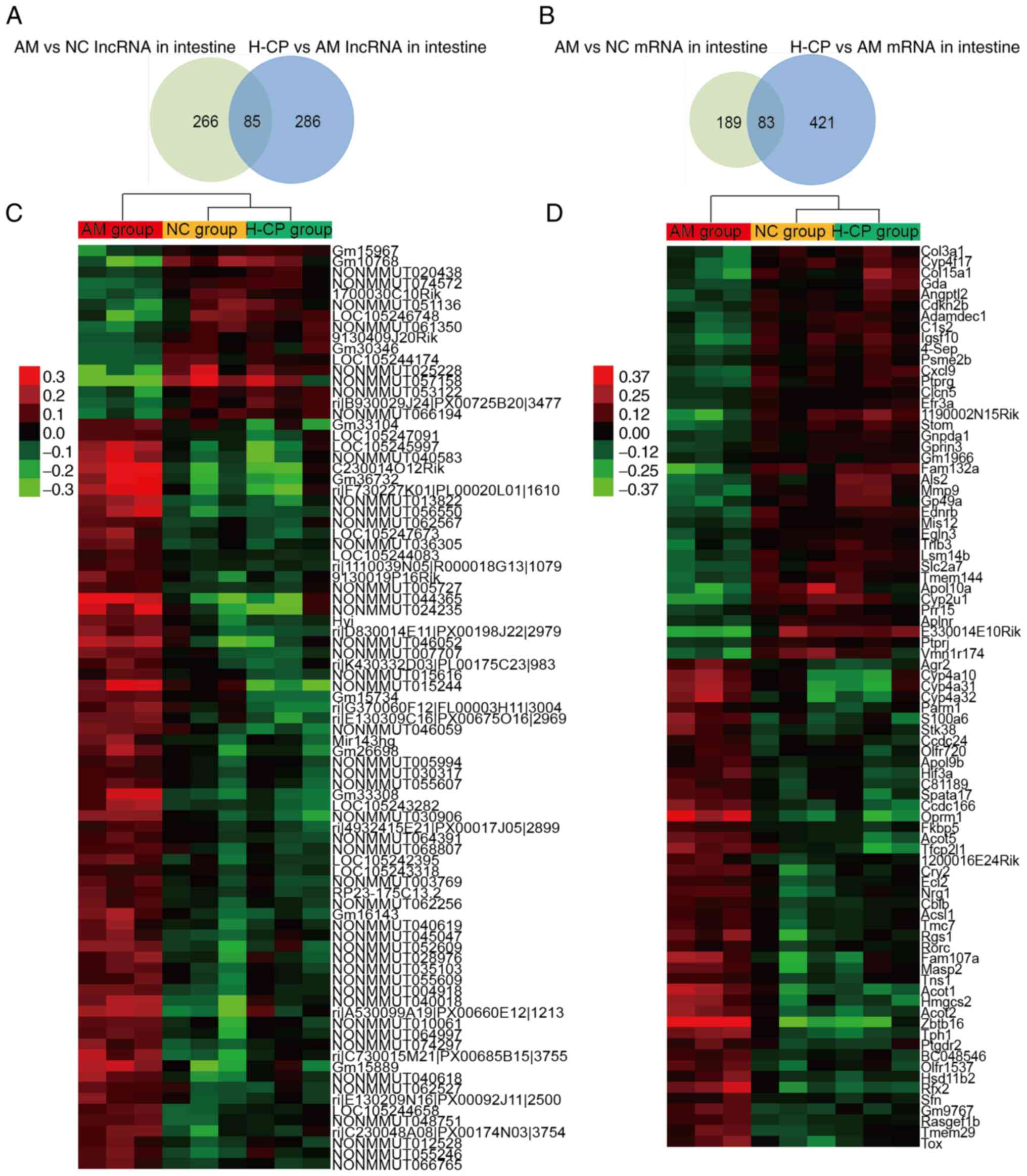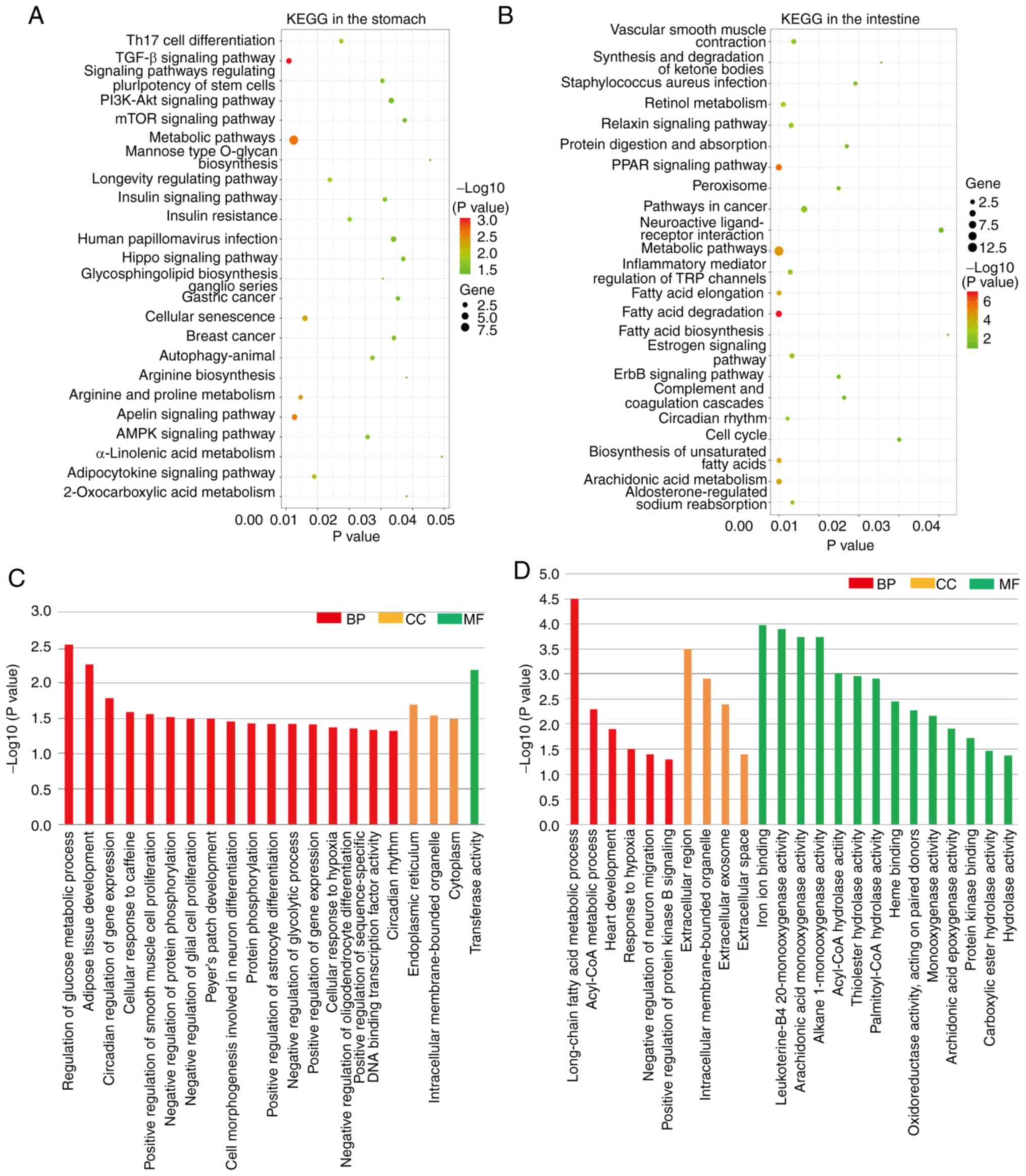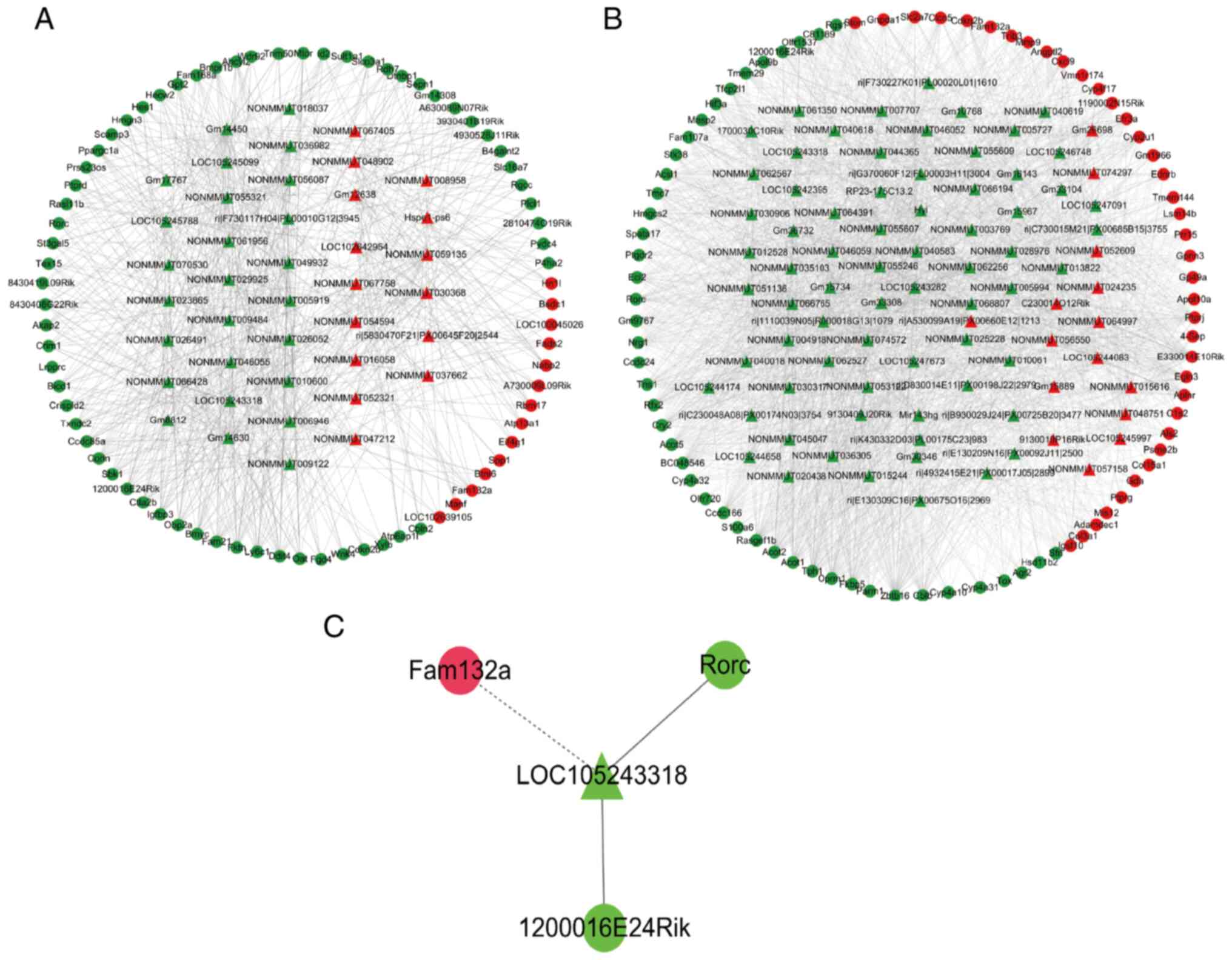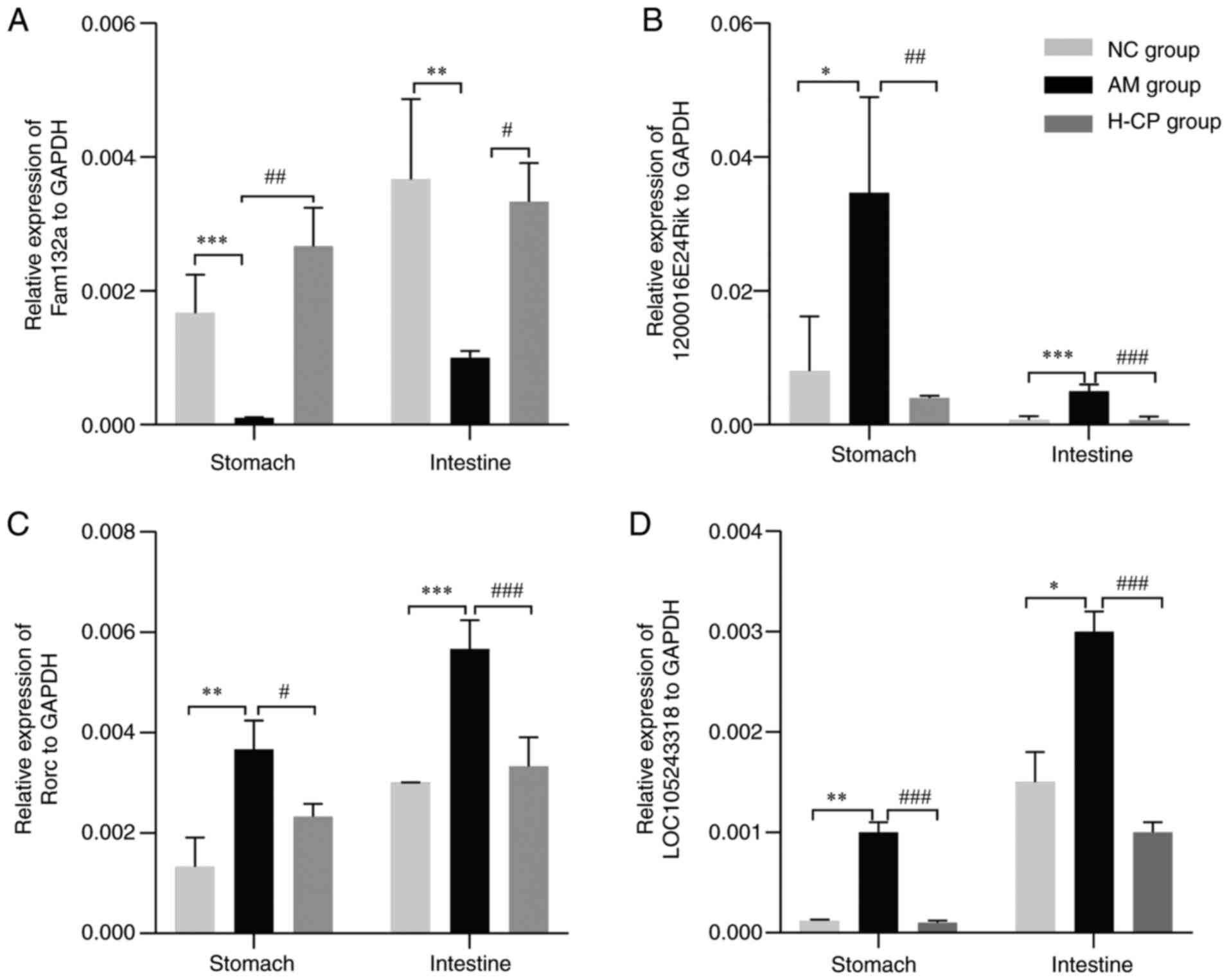|
1
|
Dumic I, Nordin T, Jecmenica M, Stojkovic
Lalosevic M, Milosavljevic T and Milovanovic T: Gastrointestinal
tract disorders in older age. Can J Gastroenterol Hepatol.
2019:67575242019. View Article : Google Scholar : PubMed/NCBI
|
|
2
|
Durazzo M, Campion D, Fagoonee S and
Pellicano R: Gastrointestinal tract disorders in the elderly.
Minerva Med. 108:575–591. 2017.PubMed/NCBI
|
|
3
|
Zhang XL and Zheng SB: Aging of digestive
system and clinic. Chin J Clin. 43:3–7. 2015.In Chinese.
|
|
4
|
Zhang HD: From 2014 to 2018, a
retrospective analysis was conducted on the hospitalization
situation of the elderly over 60 years old in a hospital. Jiangsu
Health System Management. 30:1561–1563. 2019.In Chinese.
|
|
5
|
Azman KF and Zakaria R:
D-Galactose-induced accelerated aging model: An overview.
Biogerontology. 20:763–782. 2019. View Article : Google Scholar : PubMed/NCBI
|
|
6
|
Cai J, Ashraf MA, Luo L and Tang H:
Effects of Codonopsis pilosula water extract on MicroRNA expression
profile in D-galactose-induced senile mice. Pak J Pharm Sci.
30(Special): 1179–1183. 2017.PubMed/NCBI
|
|
7
|
Yang J, He Y, Zou J, Xu L, Fan F and Ge Z:
Effect of polygonum multiflorum thunb on liver fatty acid content
in aging mice induced by D-galactose. Lipids Health Dis.
18:1282019. View Article : Google Scholar : PubMed/NCBI
|
|
8
|
Chen P, Chen F and Zhou BH: Leonurine
ameliorates D-galactose-induced aging in mice through activation of
the Nrf2 signalling pathway. Aging (Albany NY). 11:7339–7356. 2019.
View Article : Google Scholar
|
|
9
|
Wang HZ, Lian ZX, Lu GD, Huang YF, Cui ZJ,
Li JT and Du T: Relationship between seedling grade of Codonopsis
pilosula and yield and quality of medicinal materials. Zhongguo
Zhong Yao Za Zhi. 41:3950–3955. 2016.In Chinese.
|
|
10
|
Zhang JQ, Su X, Wu Q, Ding SS and Sun K:
Analysis of RAPD on medicinal plants of Codonopsis pilosula. Zhong
Yao Cai. 29:417–420. 2006.In Chinese. PubMed/NCBI
|
|
11
|
Xie Q, Sun Y, Cao L, Chen L, Chen J, Cheng
X and Wang C: Antifatigue and antihypoxia activities of
oligosaccharides and polysaccharides from Codonopsis pilosula in
mice. Food Funct. 11:6352–6362. 2020. View Article : Google Scholar : PubMed/NCBI
|
|
12
|
Gao SM, Liu JS, Wang M, Cao TT, Qi YD,
Zhang BG, Sun XB, Liu HT and Xiao PG: Traditional uses,
phytochemistry, pharmacology and toxicology of Codonopsis: A
review. J Ethnopharmacol. 219:50–70. 2018. View Article : Google Scholar : PubMed/NCBI
|
|
13
|
Yoon IS and Cho SS: Effects of lobetyolin
on xanthine oxidase activity in vitro and in vivo: Weak and mixed
inhibition. Nat Prod Res. May 29–2019.Epub ahead of print.
View Article : Google Scholar
|
|
14
|
Deng X, Fu Y, Luo S, Luo X, Wang Q, Hu M,
Ma F, Ma CW and Zhou L: Polysaccharide from radix codonopsis has
beneficial effects on the maintenance of T-cell balance in mice.
Biomed Pharmacother. 112:1086822019. View Article : Google Scholar : PubMed/NCBI
|
|
15
|
Li J, Zhang X, Cao L, Ji J and Gao J:
Three inulin-type fructans from Codonopsis pilosula (Franch.)
nannf. roots and their prebiotic activity on Bifidobacterium
longum. Molecules. 23:31232018. View Article : Google Scholar
|
|
16
|
Li J, Wang T, Zhu Z, Yang F, Cao L and Gao
J: Structure features and anti-gastric ulcer effects of inulin-type
fructan CP-A from the roots of Codonopsis pilosula (Franch.) nannf.
Molecules. 22:22582017. View Article : Google Scholar
|
|
17
|
Li L, Zhang L and Yang CC: Multi-target
strategy and experimental studies of traditional Chinese medicine
for Alzheimer's disease therapy. Curr Top Med Chem. 16:537–548.
2016. View Article : Google Scholar
|
|
18
|
Tian SS, Yang J, Zhao J and Zhang WD:
Application of network biology on study of traditional Chinese
medicine. Zhongguo Zhong Yao Za Zhi. 43:274–280. 2018.In Chinese.
PubMed/NCBI
|
|
19
|
Xu H, He L, Chen J, Hou X, Fan F, Wu H,
Zhu H and Guo Y: Different types of effective fractions from Radix
Isatidis revealed a multiple-target synergy effect against
respiratory syncytial virus through RIG-I and MDA5 signaling
pathways, a pilot study to testify the theory of superposition of
traditional Chinese Medicine efficacy. J Ethnopharmacol.
239:1119012019. View Article : Google Scholar
|
|
20
|
Grogan KE and Perry GH: Studying human and
nonhuman primate evolutionary biology with powerful in vitro and in
vivo functional genomics tools. Evol Anthropol. 29:143–158. 2020.
View Article : Google Scholar : PubMed/NCBI
|
|
21
|
Park HW and Weiss ST: Understanding the
molecular mechanisms of asthma through transcriptomics. Allergy
Asthma Immunol Res. 12:399–411. 2020. View Article : Google Scholar : PubMed/NCBI
|
|
22
|
Kazimierczyk M, Kasprowicz MK, Kasprzyk ME
and Wrzesinski J: Human long noncoding RNA interactome: Detection,
characterization and function. Int J Mol Sci. 21:10272020.
View Article : Google Scholar :
|
|
23
|
Tong H, Mao D, Zhai M, Zhang Z, Sun G and
Jiang G: Macrophage activation induced by the polysaccharides
isolated from the roots of Sanguisorba officinalis. Pharm Biol.
53:1511–1515. 2015. View Article : Google Scholar : PubMed/NCBI
|
|
24
|
Chen F, Huang G, Yang Z and Hou Y:
Antioxidant activity of Momordica charantia polysaccharide and its
derivatives. Int J Biol Macromol. 138:673–680. 2019. View Article : Google Scholar : PubMed/NCBI
|
|
25
|
Sun K, Yang P, Zhao R, Bai Y and Guo Z:
Matrine attenuates D-Galactose-induced aging-related behavior in
mice via inhibition of cellular senescence and oxidative stress.
Oxid Med Cell Longev. 2018:71086042018. View Article : Google Scholar
|
|
26
|
Du HM, Wang YJ, Liu X, Wang SL, Wu SM,
Yuan Z and Zhu XK: Defective central immune tolerance induced by
high-dose D-Galactose resembles aging. Biochemistry (Mosc).
84:617–626. 2019. View Article : Google Scholar
|
|
27
|
Liu J, Chen D, Wang Z, Chen C, Ning D and
Zhao S: Protective effect of walnut on d-galactose-induced aging
mouse model. Food Sci Nutr. 3:969–976. 2019. View Article : Google Scholar
|
|
28
|
Fang JY, Du YQ, Liu WZ, Ren JL, Li YQ,
Chen XY, Lv NH, Chen YX and Lv B; Chinese Society of
Gastroenterology, Chinese Medical Association: Chinese consensus on
chronic gastritis (2017, Shanghai). J Dig Dis. 19:182–203. 2018.
View Article : Google Scholar : PubMed/NCBI
|
|
29
|
Livak KJ and Schmittgen TD: Analysis of
relative gene expression data using real-time quantitative PCR and
the 2(-Delta Delta C(T)) method. Methods. 25:402–408. 2001.
View Article : Google Scholar
|
|
30
|
Soenen S and Chapman IM: Body weight,
anorexia, and under-nutrition in older people. J Am Med Dir Assoc.
14:642–648. 2013. View Article : Google Scholar : PubMed/NCBI
|
|
31
|
Fulop T, Witkowski JM, Pawelec G, Alan C
and Larbi A: On the immunological theory of aging. Interdiscip Top
Gerontol. 39:163–176. 2014. View Article : Google Scholar : PubMed/NCBI
|
|
32
|
Martínez de Toda I, Vida C, Sanz San,
Miguel L and De la Fuente M: Function, oxidative, and inflammatory
stress parameters in immune cells as predictive markers of lifespan
throughout aging. Oxid Med Cell Longev. 2019:45742762019.
View Article : Google Scholar : PubMed/NCBI
|
|
33
|
Zhao X, Yi R, Zhou X, Mu J, Long X, Pan Y,
Song JL and Park KY: Preventive effect of Lactobacillus plantarum
KSFY02 isolated from naturally fermented yogurt from Xinjiang,
China, on d-galactose-induced oxidative aging in mice. J Dairy Sci.
102:5899–5912. 2019. View Article : Google Scholar : PubMed/NCBI
|
|
34
|
Tarnawski AS, Ahluwalia A and Jones MK:
Increased susceptibility of aging gastric mucosa to injury: The
mechanisms and clinical implications. World J Gastroenterol.
20:4467–4482. 2014. View Article : Google Scholar : PubMed/NCBI
|
|
35
|
Dinis-Ribeiro M and Kuipers EJ:
Identification of gastric atrophic changes: From histopathology to
endoscopy. Endoscopy. 47:533–537. 2015. View Article : Google Scholar : PubMed/NCBI
|
|
36
|
Ren WY, Wu KF, Li X, Luo M, Liu HC, Zhang
SC and Hu Y: Age-related changes in small intestinal mucosa
epithelium architecture and epithelial tight junction in rat
models. Aging Clin Exp Res. 26:183–191. 2014. View Article : Google Scholar
|
|
37
|
Hou P, Zhou X, Yu L, Yao Y, Zhang Y, Huang
Y, Chen M, Yi L and Mi M: Exhaustive exercise induces
gastrointestinal syndrome through reduced ILC3 and IL-22 in mouse
model. Med Sci Sports Exerc. 52:1710–1718. 2020. View Article : Google Scholar : PubMed/NCBI
|
|
38
|
Clark R and Johnson R: Malabsorption
syndromes. Nurs Clin North Am. 53:361–374. 2018. View Article : Google Scholar : PubMed/NCBI
|
|
39
|
Mansoori B, Rogiewicz A and Slominski BA:
The effect of canola meal tannins on the intestinal absorption
capacity of broilers using a D-xylose test. J Anim Physiol Anim
Nutr (Berl). 99:1084–1093. 2015. View Article : Google Scholar
|
|
40
|
Oteiza PI, Fraga CG, Mills DA and Taft DH:
Flavonoids and the gastrointestinal tract: Local and systemic
effects. Mol Aspects Med. 61:41–49. 2018. View Article : Google Scholar : PubMed/NCBI
|
|
41
|
Deng Y, Han X, Tang S, Li C, Xiao W and
Tan Z: Magnolol and Honokiol attenuate apoptosis of enterotoxigenic
escherichia coli-induced intestinal epithelium by maintaining
secretion and absorption homeostasis and protecting mucosal
integrity. Med Sci Monit. 24:3348–3356. 2018. View Article : Google Scholar : PubMed/NCBI
|
|
42
|
Kitazawa T, Yoshida A, Tamano T, Teraoka H
and Kaiya H: Age-dependent reduction of ghrelin- and
motilin-induced contractile activity in the chicken
gastrointestinal tract. Peptides. 43:88–95. 2013. View Article : Google Scholar : PubMed/NCBI
|
|
43
|
Ivic I, Solymar M, Fulop BD, Hashimoto H,
Toth G, Tamas A, Juhasz T, Koller A and Reglodi D: Aging-induced
modulation of pituitary adenylate cyclase-activating peptide- and
vasoactive intestinal peptide-induced vasomotor responses in the
arteries of mice. J Vasc Res. 54:359–366. 2017. View Article : Google Scholar : PubMed/NCBI
|
|
44
|
Korkmaz OT, Ay H, Aytan N, Carreras I,
Kowall NW, Dedeoglu A and Tuncel N: Vasoactive intestinal peptide
decreases β-amyloid accumulation and prevents brain atrophy in the
5xFAD mouse model of Alzheimer's disease. J Mol Neurosci.
68:389–396. 2019. View Article : Google Scholar
|
|
45
|
Planes-Muñoz D, López-Nicolás R,
González-Bermúdez CA, Ros-Berruezo G and Frontela-Saseta C: In
vitro effect of green tea and turmeric extracts on GLP-1 and CCK
secretion: The effect of gastrointestinal digestion. Food Funct.
9:5245–5250. 2018. View Article : Google Scholar : PubMed/NCBI
|
|
46
|
Hollander D, Tarnawski A, Stachura J and
Gergely H: Morphologic changes in gastric mucosa of aging rats. Dig
Dis Sci. 34:1692–1700. 1989. View Article : Google Scholar : PubMed/NCBI
|
|
47
|
Takeda K, Okumura T, Taniguchi K and
Adachi-Yamada T: Adult intestine aging model. Adv Exp Med Biol.
1076:11–23. 2018. View Article : Google Scholar : PubMed/NCBI
|
|
48
|
Tan BK, Chen J, Hu J, Amar O, Mattu HS,
Ramanjaneya M, Patel V, Lehnert H and Randeva HS: Circulatory
changes of the novel adipokine adipolin/CTRP12 in response to
metformin treatment and an oral glucose challenge in humans. Clin
Endocrinol (Oxf). 81:841–846. 2014. View Article : Google Scholar
|
|
49
|
Chen H, Ma X, Liu Y, Ma L, Chen Z, Lin X,
Si L, Ma X and Chen X: Gut microbiota interventions with
clostridium butyricum and norfloxacin modulate immune response in
experimental autoimmune encephalomyelitis mice. Front Immunol.
10:16622019. View Article : Google Scholar :
|
|
50
|
Castañeda-Delgado JE, Frausto-Lujan I,
González-Curiel I, Montoya-Rosales A, Serrano CJ, Torres-Juarez F,
Enciso-Moreno JA and Rivas-Santiago B: Differences in cytokine
production during aging and its relationship with anti-microbial
peptides production. Immunol Invest. 46:48–58. 2017. View Article : Google Scholar
|
|
51
|
Vemuri R, Shinde T, Gundamaraju R,
Gondalia SV, Karpe AV, Beale DJ, Martoni CJ and Eri R:
Lactobacillus acidophilus DDS-1 modulates the gut microbiota and
improves metabolic profiles in aging mice. Nutrients. 10:12552018.
View Article : Google Scholar :
|
|
52
|
Brasili E, Mengheri E, Tomassini A,
Capuani G, Roselli M, Finamore A, Sciubba F, Marini F and Miccheli
A: Lactobacillus acidophilus La5 and Bifidobacterium lactis Bb12
induce different age-related metabolic profiles revealed by 1H-NMR
spectroscopy in urine and feces of mice. J Nutr. 143:1549–1557.
2013. View Article : Google Scholar : PubMed/NCBI
|
|
53
|
Westfall S, Lomis N and Prakash S:
Longevity extension in Drosophila through gut-brain communication.
Sci Rep. 8:83622018. View Article : Google Scholar : PubMed/NCBI
|
|
54
|
Fu YP, Feng B, Zhu ZK, Feng X, Chen SF, Li
LX, Yin ZQ, Huang C, Chen XF, Zhang BZ, et al: The polysaccharides
from Codonopsis pilosula modulates the immunity and intestinal
microbiota of cyclophosphamide-treated immunosuppressed mice.
Molecules. 23:18012018. View Article : Google Scholar :
|
|
55
|
Jing Y, Li A, Liu Z, Yang P, Wei J, Chen
X, Zhao T, Bai Y, Zha L and Zhang C: Absorption Codonopsis pilosula
saponins by coexisting polysaccharides alleviates gut microbial
dysbiosis with dextran sulfate sodium-induced colitis in model
mice. Biomed Res Int. 2018:17810362018. View Article : Google Scholar
|















